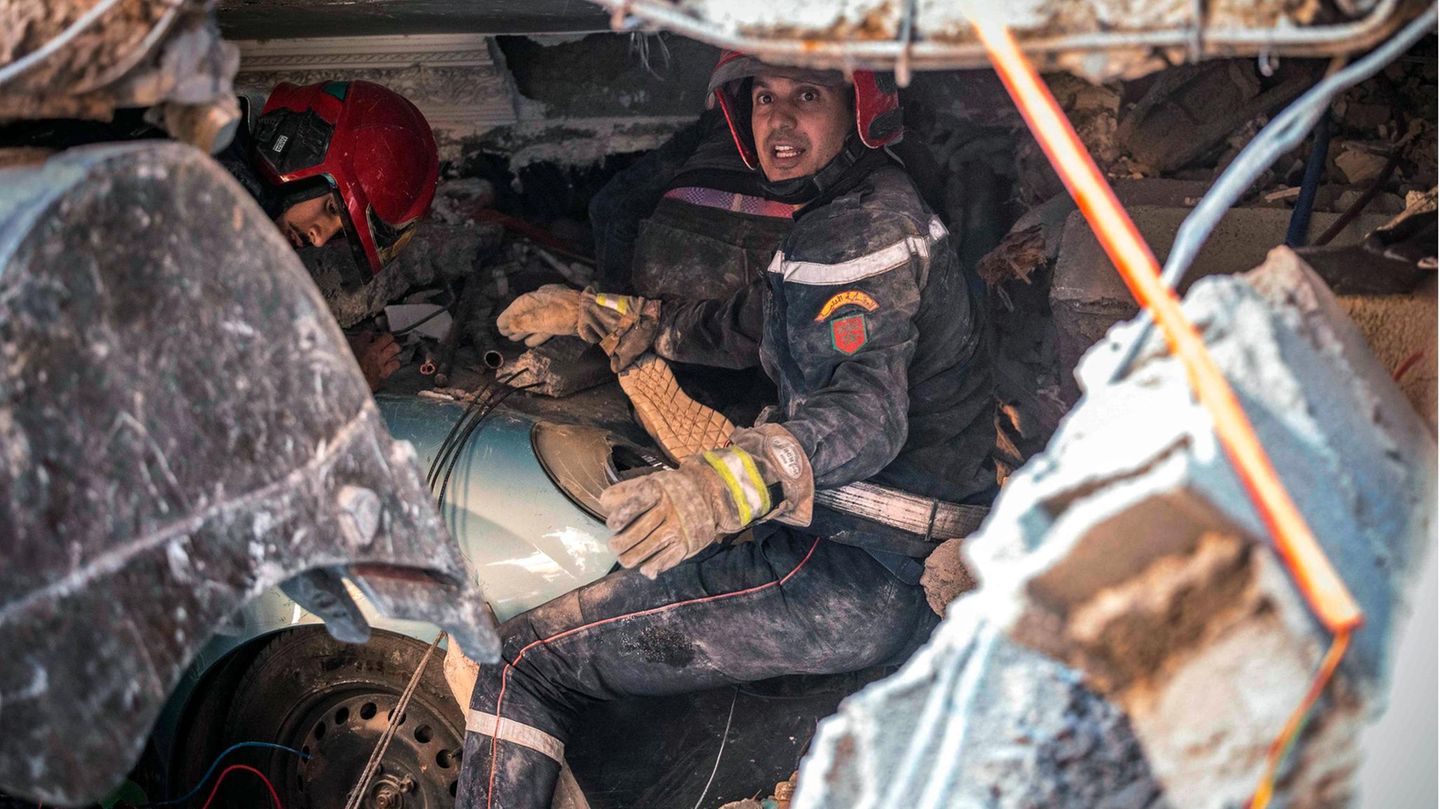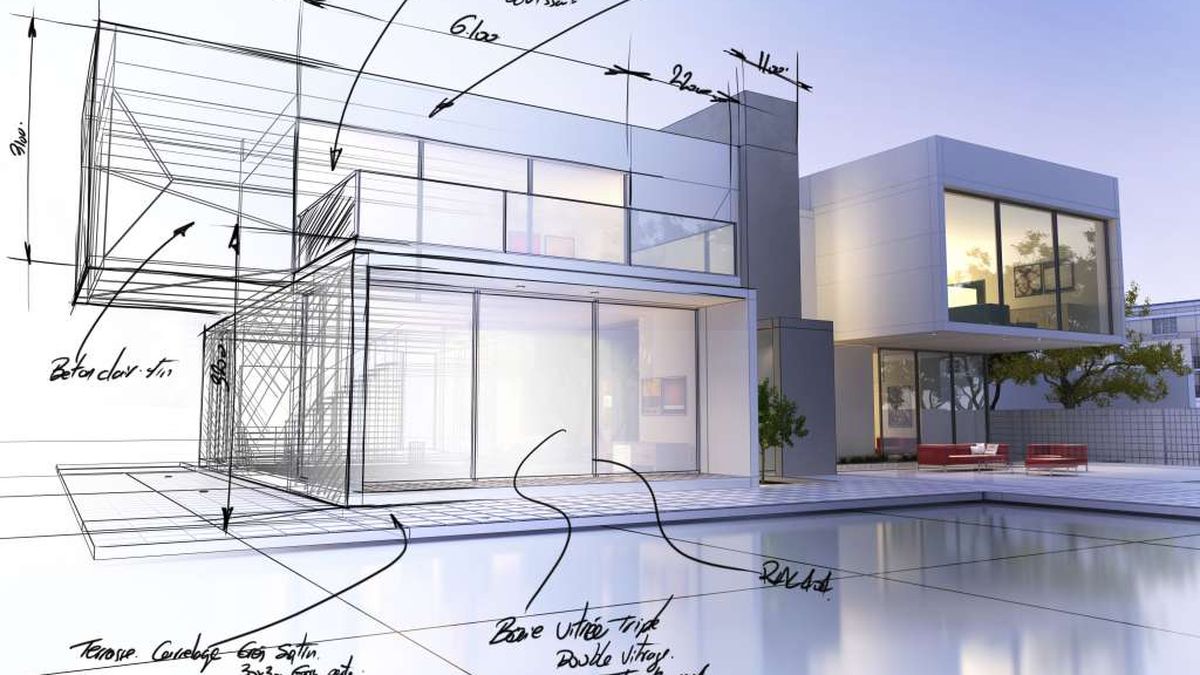While everyday life is already returning to life in the business districts of Marrakech, in the villages of the High Atlas that were particularly affected by the earthquake, it is only slowly becoming clear how great the destruction is – and why helpers are having such a hard time here.
By Mirco Keilberth
The full extent of the destruction caused by the largest earthquake in Morocco in decades is only slowly becoming clear. The Interior Ministry in Rabat has counted 2,862 dead and over 3,000 injured so far, and the further the rescuers advance into the remote villages of the Atlas Mountains, the higher the numbers rise.
After several minor aftershocks, thousands of people around the tourist metropolis of Marrakech are still sleeping on the streets in front of their houses and apartments. In the city, however, everyday life returned surprisingly quickly. In the city center and on the streets of the business district, only the long convoys of trucks carrying relief supplies serve as a reminder of the tragedies taking place in the medina and the plateau southwest of the city. The trucks are loaded with private donations, food and tents. But here in Marrakech’s business district, the large display windows of the fashion stores and the elaborate reliefs on the train station facade are just as undamaged as the numerous new buildings on the outskirts of the city that were built during the tourist boom of the last few decades.
Uncertain future
It’s a strange picture given the news situation: the cafes and hotels are full of guests, and many of the international tourists also seem to have stayed in the city. Only a walk into the Medina, the old town, reveals a completely different picture. Heavy clearing equipment is in use at Djemaa el fna, the marketplace that normally attracts visitors from all over the world. Helpers from the Red Crescent and the Moroccan army are searching for survivors. The minaret of the famous mosque fell onto the street. And many of the houses in the southern Medina, which are often several centuries old, have collapsed like houses of cards.
“I thought a plane had crashed,” said Mohamed Lagar, a kiosk owner. His small shop is located in one of the narrow streets that leads from Djemaa el fna into the labyrinth of closely packed houses. Now firefighters are digging for his neighbors, who may be lying under a two-meter-high layer of bricks and stones. “I haven’t seen them since Friday. Maybe they’re in a hospital,” says Lagar, looking helplessly at the mountain of rubble. But he doesn’t seem to believe his own words.
Until Friday, the medina of Marrakech was the epitome of the magic of the Orient. Storytellers, snake charmers, all of this fascinated the guests from abroad. Now hundreds of families are sleeping here in the square, fearing aftershocks and because they have lost everything. “I don’t know what to do next because I don’t have the money to rebuild my house,” says 75-year-old Fatima, whose family in Casablanca now wants to bring her home. “The mosque and the medina are the heart of the country, our identity,” she says and cries.
Some of their neighbors are also among the missing. The quake particularly affected the old and poor – and the residents of the mountain villages of the Atlas. A trip there shows why the government has so far only accepted offers of aid from four countries: Spain, Qatar, Great Britain and the United Arab Emirates. These countries also support Morocco in the conflict over Western Sahara. However, help from France, where several million people of Moroccan origin live, was rejected.
“The higher we go, the more terrible the consequences of the earthquake are”
But here in the atlas we also see the logistical problems, the bottlenecks through which the aid has to pass. The mountain roads are narrow, and even the army transporters loaded with water and emergency rations only wind around the tight curves at a snail’s pace. Large boulders and, of all things, the huge wave of solidarity hinder the rescuers. Private vehicles are lined up bumper to bumper in a traffic jam, almost all loaded with donations from all over the country. Soldiers try to bring order out of chaos. The villages of Al Haouz province, 75 kilometers southwest of Marrakesh, appear to be the most affected, but rescue workers have not yet made it to many mountain villages in the Ouarzazate, Azilal, Chichaoua and Taroudant districts. “The higher we go, the greater and more cruel the consequences of the quake are,” says an army officer, visibly marked by the experiences of the last few days, as he directs an army truck loaded with drinking water past the traffic jam.
Even foreign helpers probably wouldn’t have made any quicker progress here – but he is clearly frustrated that so little help has reached the villages so far: “While new tourists will soon be arriving in Marrakesh, these mountain villages will probably be for the foreseeable future no future.”
The smell of decay
The quake has deepened social divides between those in the city, who also benefit from the tourist boom, and the poor in the countryside. The 70-year-old shepherd Ahcan Ait Majid wanders past the helpers’ vehicles from Marrakech that have arrived. In the village of Tinisikt, his home, only a few survived. Majid lost his wife and two sons in the earthquake. “I didn’t experience anything like that, we lived a quiet and peaceful life,” he says, as if still in shock. “I don’t know what I’m going to do now.”
In Tinisikt only the concrete walls of the mosque remain. The main street is littered with the rubble of mud and clay houses. There are entire life stories here: postcards, a poster, children’s clothing.
Villagers evacuated by the army are returning from their tent camp. They try to save some furniture from the houses. Others, like Ahcan Ait Majid, simply stand on the street and cry. Like everywhere else in the area, the smell of decay hangs over the village.
Wave of solidarity
Army soldiers politely ask the returnees to stay away from the wreckage of their lives. Even slight movements could bury rescuers and searchers under the rubble. The survivors of Tinisikt sleep in tents on the side of the road along with family members. 50 people lie tightly together under simple tarpaulins. Doctors, nurses and social workers are being flown in by helicopter from Rabat, Agadir and Casablanca. Further towards the plain, in an army field hospital halfway between Tinisikt and Marrakech, more and more injured people arrive. Colonel Yussuf Quamus stands in front of a row of tents. He rejects criticism of the rejection of foreign support or that aid is too slow. “We know what we’re doing. You can see that you have to know your way around here in the mountains in order to be able to help. But the big challenge will be to give the survivors a future in their villages again.”
Fear and pray
State of emergency in Morocco – the desperate search for those buried continues
Morocco’s King Mohamed IV has already announced a fund to rebuild the villages of the Atlas. He had only returned from his stay in France 18 hours after the quake. In France, the monarch is nicknamed the “Reluctant King.” He spends a lot of time in his castle in Betz, northeast of Paris, which his father Hassan II acquired in 1972. As of Monday, no leading government members had traveled to the disaster area.
But the wave of solidarity from Moroccans has so far largely drowned out the negative voices. Criticism of the king or the government is hardly heard in the earthquake region, at least not from foreign journalists. It is the hour of solidarity, that is what is being emphasized again and again.
Source: Stern
I have been working in the news industry for over 6 years, first as a reporter and now as an editor. I have covered politics extensively, and my work has appeared in major newspapers and online news outlets around the world. In addition to my writing, I also contribute regularly to 24 Hours World.




